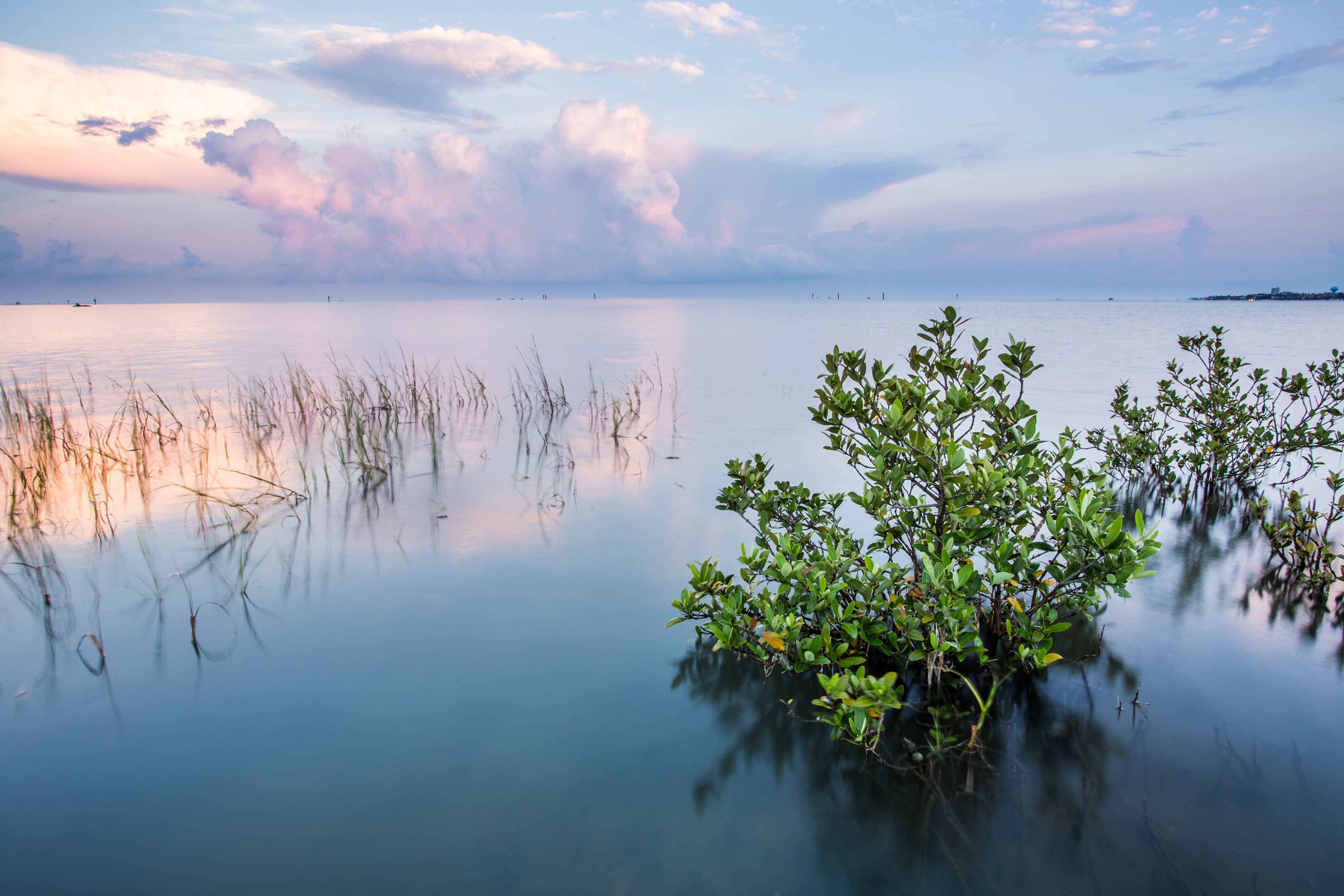Mangrove Vs. Marsh:
A Habitat Head-To-Head
By Alli Dickey

Long-time coastal Texans may have noticed a shift along the shore.
Mangroves are charging into the wetlands where marshes once ruled. Scientists put the two habitats to the test to determine which one is better for the Texas coast.
Mangroves are a group of trees that can survive in the salty conditions where the land meets the sea. They’re also known as the “first line of defense” against coastal erosion and flooding.
A marsh is a type of wetland that is adapted to flooding and typically remains waterlogged for long periods of time. Unlike swamps which have trees, marshes are full of herbaceous plants that slow the flow of water while absorbing extra nutrients.
Mangrove vs. Marsh Stats

Photo by David Clode on Unsplash
Photo by David Clode on Unsplash
Mangrove
- Survive in the “intertidal zone,” where the land meets the sea
- Known as the first line of defense against coastal erosion and flooding
- Seeds called “propagules” drop into the water and float to disperse to new places
Texas wetlands are a patchwork of mangroves and marshes.
Dr. Anna Armitage, a Professor of Marine Biology at Texas A&M University at Galveston, studies the switch from marshes to mangroves due to warming winters and rising sea levels, and what these changes mean for ecosystems.
The Coastal Bend region of Texas is dominated by mangroves because of their affinity for a warmer climate. Along the northern coast, there are small stands of mangrove trees interspersed with marsh vegetation.
“If we have a cold snap, the mangroves will die back and then slowly regrow,” Armitage says. “This provides space for the marsh plants to keep growing and coexist with mangroves in this environment.”
Now, mangroves are becoming more common across the Texas Gulf Coast, largely due to warming winter temperatures. It is projected that cold snaps will get less frequent and mangroves will continue to grow, reproduce, and displace marshes.
“Mangroves are getting larger, more reproductive, and more established in some places on the Texas coast,” she says.
Armitage and her team of Dr. Steven Pennings from the University of Houston and Dr. John Kominoski from Florida International University questioned whether this was a good thing. She started looking into what this would mean for coastal ecosystems and realized that the answer had not been discovered. So, she began multiple projects researching the different consequences of mangrove expansion.
Some of the projects were observational. Her team went to sites where mangroves were abundant and quantified what animals and plants used the habitat, the type of soil present, and the nutrients in the soil. Then, they compared that data to sites that had just marsh plants.
Building on these field studies, graduate students conducted lab experiments to investigate if herbivores could survive and thrive on diets of mangrove leaves.
Texas Sea Grant funded their largest experiment. In cooperation with the Mission Aransas National Estuarine Research Reserve, the team removed some mangroves to create a gradient of mangrove cover. They noted what animals used the habitat, how much erosion occurred, and how the soil chemistry changed.
The results? Mangroves and marshes are not interchangeable and have different ecosystem benefits.
"Which one is better? Which one is worse? It really depends on what you need from your wetland,” Armitage says.
The team found that mangroves are better at preventing coastal erosion, but the carbon in mangrove leaves is not a good food source. Organisms at the bottom of the food web, such as snails and fiddler crabs, have lower fitness on diets of mangrove leaves. Mangroves are better for nesting birds, but they are worse for birds that forage in marshes. Predators, such as blue crabs, forage less effectively among mangroves.
For coastal protection, the team found that mangroves are better at protecting shorelines from erosion, but they may not be tolerant of sea level rise.
Overall, Armitage says mangroves should not be introduced to areas where they would not naturally occur. She says managers should try to emulate the natural area when restoring wetlands. Restoring marshes and mangrove habitats to resemble nearby healthy wetlands will have the largest direct benefit to living marine resources.
“It is not just about plants,” she says. “The plants can change everything from the microbes in the soil to the invertebrates, fish, birds and even the mammals that use the habitat.”
Although she researched the difference between the two habitats, Armitage says the issue with disturbances on the coast is less about mangroves versus marsh and more about habitat loss.
“The real threat is habitat loss due to sea level rise and development,” she says. “That is when the habitat does not come back.”
She is working with groups like the Galveston Bay Foundation and Texas Parks and Wildlife Department to ensure restoration practices are effective and beneficial.
Armitage still has questions. In 2021, the experimental coastal bend area was thrown a curve ball that opened up a whole new study. Texas experienced a winter freeze that was cold enough to cause widespread mangrove mortality in their study site. Six months later, some mangroves resprouted, and many seedlings took root. Her team is now using the area to study the dynamics of mangrove recovery after a freeze event.
